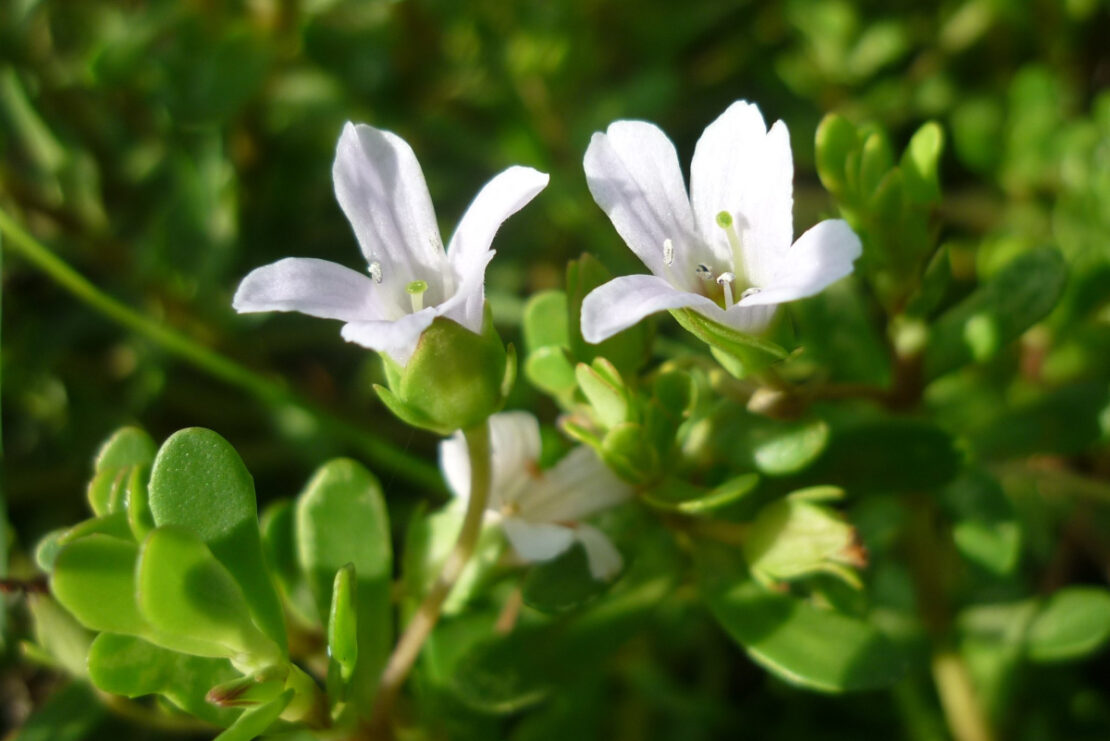
In Search of the True Brahmi: Bacopa vs Gotu Kola
Herbs known by the name “brahmi” have an affinity for the nervous system and tend to support memory. There are a few different herbs that go by this name, the most commonly known are Bacopa monniera and Centella asiatica. Given that the name “brahmi” is applied to more than one herb, one may be left to wonder, “which is the real brahmi?” Is Bacopa monniera the true brahmi? Or is it gotu kola (Centella asiatica)? This post will compare two of the more widely used herbs that may go by the alias brahmi: bacopa (Bacopa monniera) and gotu kola (Centella asiatica). After reading this post, you will be left with a more clear understanding of bacopa vs gotu kola—where these two plant allies crossover, where they diverge, and why brahmi is an apt name for both.
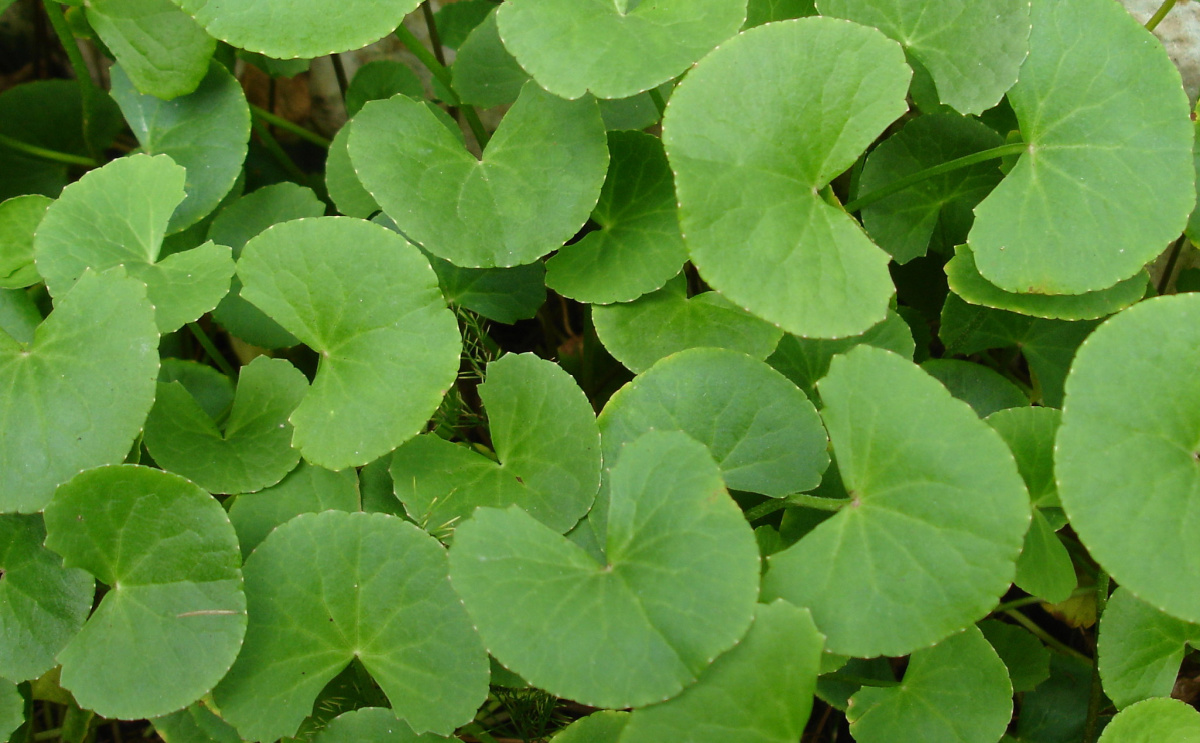
What’s In a Name? Bacopa vs Gotu Kola
As mentioned above, “brahmi” is the name given to a few different herbs and refers to the feminine aspect of cosmic consciousness. It may also be translated as what gives knowledge of supreme reality (Dass, 2013; Frawley & Lad, 2001). In addition, brahmi is another name for Saraswati, the goddess of arts and letters (Dass, 2013), and is also related to universal, divine consciousness (Banyan Botanicals, 2021).
Though gotu kola may be called brahmi (and it certainly has the mind-supportive qualities to support that nickname), my observation is that Bacopa monniera is more widely known as brahmi in most modern ayurvedic texts. However, it would not be incorrect to refer to gotu kola as “brahmi.” Some experts say that Bacopa monniera is more readily available in India and other parts of Asia than in the West. For this reason, gotu kola has often been substituted for Bacopa monniera—and thereby assumed the common name “brahmi” in the West. However, other credible sources report that Bacopa monniera is referred to as “brahmi” in Northern India whereas gotu kola (Centella asiatica) is known as “brahmi” in Southern India (Banyan Botanicals, 2021).
Fortunately, both of these herbs are highly beneficial and have very similar properties. Bacopa and gotu kola may be used for similar reasons, but by understanding the nuances of these two herbs, you can make an optimal, more targeted choice as to which herb you select given a particular circumstance.
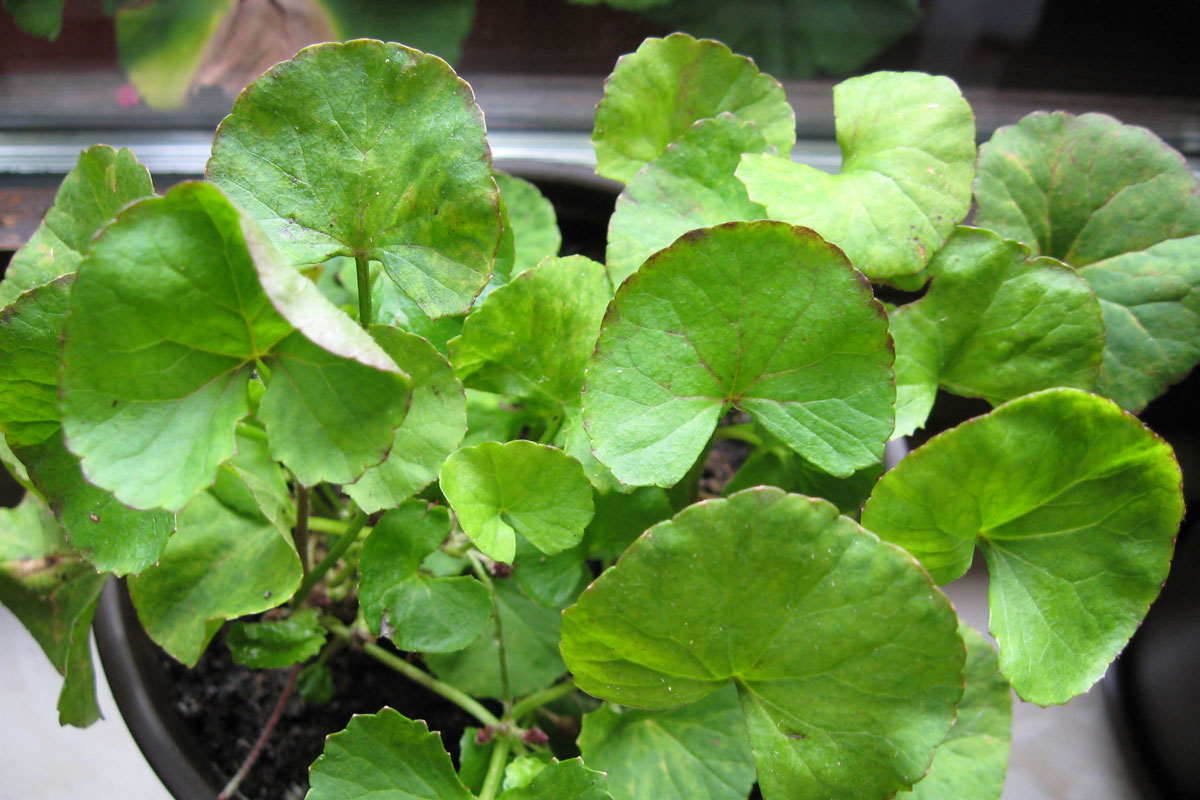
Gotu Kola (Centella asiatica): The Basics
Before we dive into the applications and subtleties of gotu kola, let’s take a look at some basic information for this plant. As you study the qualities, visualize a low-growing plant with small round leaves. The size, texture, and habit of gotu kola are a bit like the widespread ground cover, ground ivy (Glechoma hederachea) of temperate climates.
Rasa (taste): bitter, sweet, astringent
Virya (energetics): cool
Vipak (post-digestive effect): sweet (nourishing)
Body systems: Gotu kola nourishes all the tissues except for the shukra dhatu (sexual organs and fluids) (Dass, 2013).
Where does it grow? Gotu kola is a creeping perennial with broad, green leaves. It prefers warm climates and damp soil.
Parts used: leaf
Dosage: 1-30 grams as infusion. Tincture: 3-15 mL (1:3 in 25% tincture) (Pole, 2013).
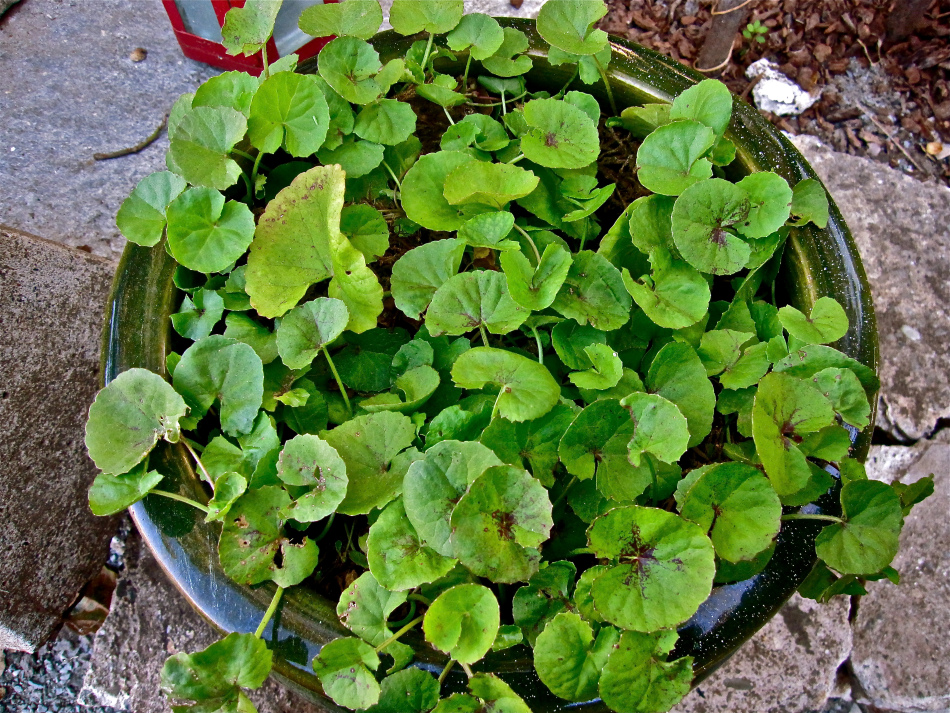
Usages for Gotu Kola
Gotu kola has similar properties and main uses to Bacopa monniera (which is what we delve into next), though has stronger diuretic actions and milder nervine actions (Frawley & Lad, 2001). Its energy is cooling and it is one of the best all-around herbs for pitta imbalances. In particular, gotu kola balances sadhaka pitta—the aspect of pitta that governs the mind and intellect. Sadhaka pitta also governs the processing of thoughts and feelings (Dass, 2013).
For pitta-types who experience mental burnout and fatigue, gotu kola is a great choice as a rejuvenative. In fact, in Ayurveda it is considered a pitta rasayana, or deeply nourishing, rejuvenative herb that is ideal for pitta dosha.
This cool, nutritive herb also has an affinity for the skin and connective tissue. Herbalist Maria Noel Groves (2016) affirms its ability to repair collagen, strengthen capillaries, and promote circulation. In addition, gotu kola is indicated for rashes and acne (Dass, 2013).
Furthermore, early hair graying and hair loss are associated with pitta dosha, and gotu kola is often used to support healthy hair and scalp. For this purpose, it can be taken internally as well as applied externally as a topical hair oil (Dass, 2013). Consider gently massaging gotu kola oil (often formulated in a base of coconut oil) into the scalp and soles of the feet at bedtime to support a calm, cool mind and healthy hair and scalp.
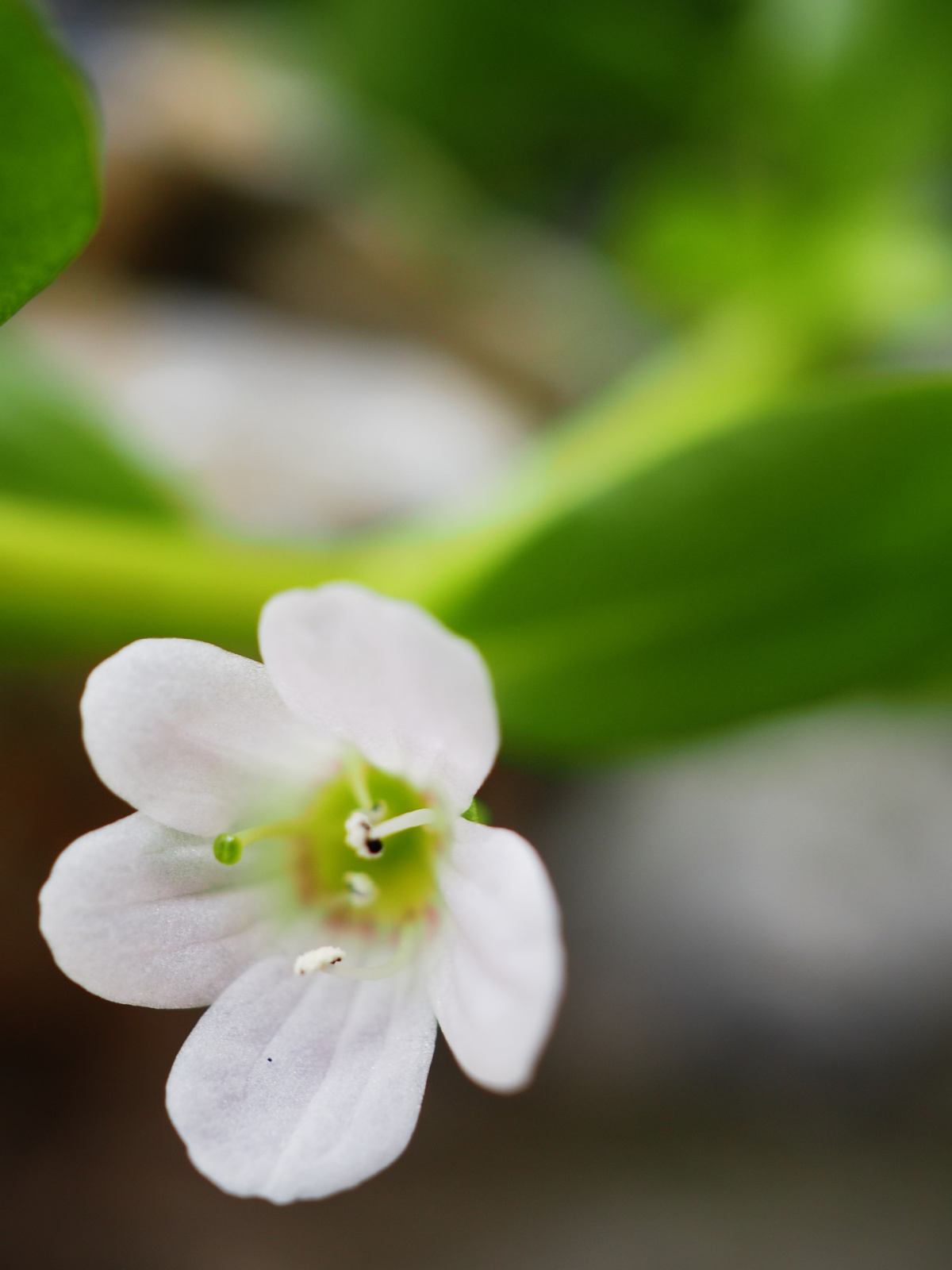
Bacopa (Bacopa Monniera): The Basics
Bacopa is also a ground-cover type plant, similar to gotu kola, but with smaller, thicker leaves that even look a bit succulent, In addition, bacopa boasts small white five-petaled flowers when it blooms.
Rasa (taste): bitter, sweet
Virya (energy): cooling
Vipaka (post-digestive effect): sweet (nourishing)
Body systems: Bacopa acts on all tissue layers. Bacopa is considered a rasayana—deeply rejuvenating herb.
Where does it grow? Look for bacopa, a flowering creeping perennial, alongside boggy rivers and streams in warm, moist, tropical climates.
Parts used: aerial parts, whole herb
Dosage: 2-6 grams per day. Fresh juice: 3 teaspoons per day. Tincture: 5-30 mL (1:5 in 25%) (Pole, 2013).
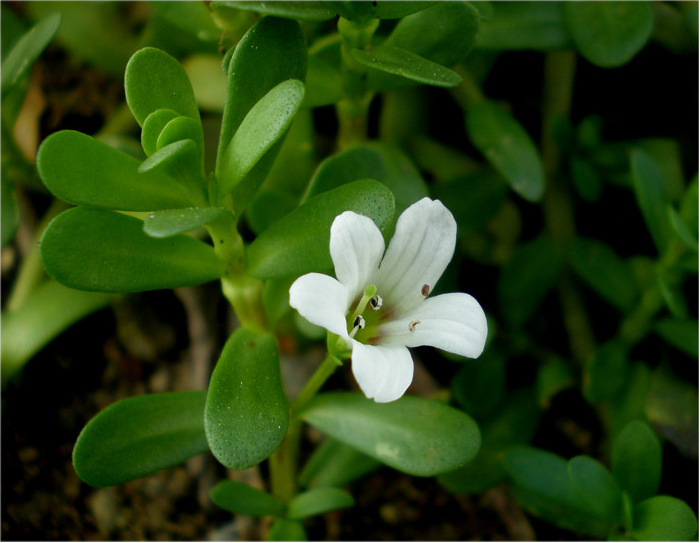
Usages for Bacopa
Bacopa monniera is useful for rebuilding from fatigue, general weakness, and nervous exhaustion caused by excess vata dosha (Pole, 2013). In addition, like gotu kola, it supports sadhaka pitta (the pitta dosha of the mind). Also, similarly to gotu kola, bacopa is suitable for all three doshas. Yet, its energy is cool (though not as cool as gotu kola), so is best combined with warming herbs and spices when applied for vata imbalances.
Something else to consider in the application of bacopa is that it is a mild appetite suppressant. Therefore, you may want to combine bacopa with digestives such as ginger, black pepper, and cardamom. Conversely, gotu kola gently stimulates the appetite. Also, bacopa is useful as a relaxant for the entire nervous system. Thus, it may be taken for tense muscles, menstrual pain, and constipation (Pole, 2013).
Also, speaking from personal experience, bacopa is an incredibly bitter herb—and this observation comes from someone who generally enjoys bitter-tasting foods and herbs! Therefore, if you are taking bacopa as an infusion, you may want to balance its extremely bitter, astringent taste with a bit of milk and honey.
Bacopa is a medhya, meaning it supports memory (Dass, 2001), and a nootropic (Banyan Botanicals, 2021). It is also a nervine, calming adaptogen, and may be useful for anxiety, depression, Alzheimer’s, insomnia, and even brain trauma recovery (Groves, 2016; Frawley & Lad, 2001). Dr. Vasant Lad and Dr. David Frawley (2001), renowned ayurvedic practitioners and authors, write this of bacopa, “It improves memory and aids in concentration…it is an important food for yogis and improves meditation” (p. 240).
Bacopa is also useful for stubborn skin conditions, likely in part due to its ability to cleanse the blood and liver and to support the immune system (Frawley & Lad, 2001). However, compared to gotu kola, it is a more potent nervine and has a weaker affinity for the skin, hair, and connective tissue.
In Closing,
In searching for the true brahmi, it may be comforting to know that both of these herbs are wonderfully nourishing for the nervous system, support memory and healthy mental function, and perhaps both deserve to be called “brahmi.” Gotu kola is slightly more cooling than bacopa, so it is ideal for pitta dosha, but both herbs have an overall cooling effect and are suitable for all three doshas given the right formulation. Also, though both of these herbs act on the skin, gotu kola is more widely used for issues that pertain to the skin and hair. And, bacopa is a slightly more potent nervine. Yet, in the end, if you are looking for a plant ally that boosts memory and nourishes the nervous system and mind, there is no need to worry about which is the true brahmi—both bacopa and gotu kola are excellent choices.
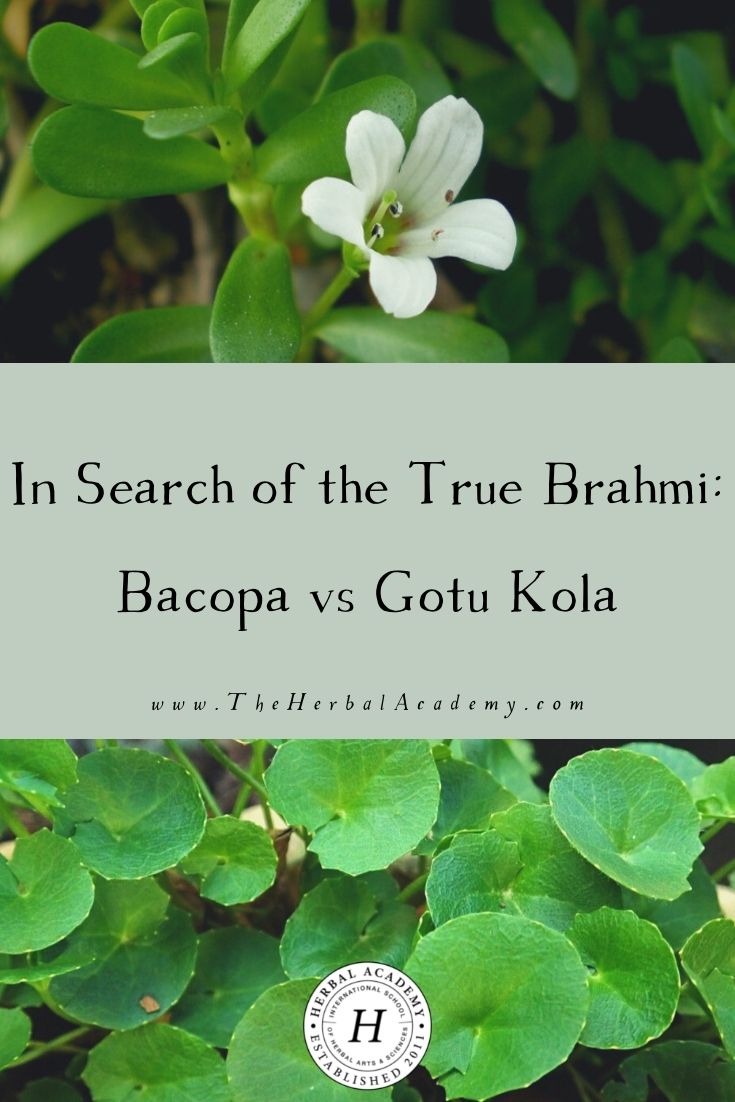
REFERENCES
Banyan Botanicals. (2021). The benefits of bacopa. Retrieved from https://www.banyanbotanicals.com/info/plants/ayurvedic-herbs/bacopa-benefits/
Dass, V. (2013). Ayurvedic herbology East & West: A practical guide to ayurvedic herbal medicine. Twin Lakes, WI: Lotus Press.
Frawley, D., & Lad, V. (2001). The yoga of herbs: An ayurvedic guide to herbal medicine. Twin Lakes, WI: Lotus Press.
Groves, M. (2016). Body into balance: An herbal guide to holistic self-care. North Adams, MA: Storey Publishing.
Pole, S. (2013). Ayurvedic medicine: The principles of traditional practice. Philadelphia, PA: Singing Dragon.








